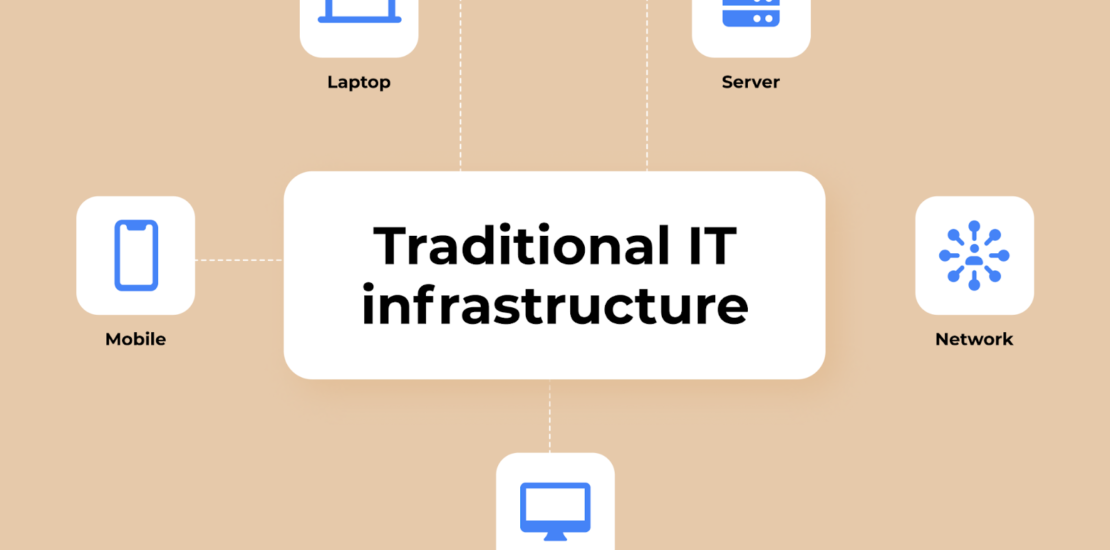Building Robust IT Infrastructure for Small UK Businesses
- March 23, 2025
- Posted by: Gradeon
- Category: IT Infrastructure

Small businesses in the UK face unique challenges in establishing and maintaining robust IT infrastructures. With the increasing reliance on technology for operations, customer interactions, and data management, it’s imperative to build a resilient and secure IT environment. This article delves into the essential components and strategies for small UK businesses, especially those handling card payments and sensitive customer data, to develop a robust IT infrastructure in 2025.
Embrace Cloud Computing Solutions
Cloud computing has revolutionised the way businesses operate, offering scalable resources and cost-effective solutions. For small businesses, cloud services eliminate the need for significant upfront investments in hardware and provide flexibility to scale operations as needed. By 2025, cloud adoption is not just an option but a necessity for staying competitive.
Benefits of Cloud Computing
Cost Efficiency: Pay-as-you-go models allow businesses to manage expenses effectively.
Scalability: Easily adjust resources based on demand.
Accessibility: Access data and applications from anywhere, facilitating remote work.
Disaster Recovery: Robust backup solutions ensure business continuity.
When selecting a cloud service provider, consider factors such as data security, compliance with UK regulations, and the provider’s reputation. Engaging with managed service providers can offer tailored solutions to meet specific business needs.
Prioritise Cybersecurity Measures
With the rise in cyber threats, safeguarding sensitive information is paramount. Small businesses are often targeted due to perceived vulnerabilities. Implementing comprehensive cybersecurity measures protects both the business and its customers.
Key Cybersecurity Strategies:
Multi-Factor Authentication (MFA): Enhances security by requiring multiple verification methods.
Regular Software Updates: Keeps systems protected against known vulnerabilities.
Employee Training: Educates staff on recognising and preventing cyber threats.
Firewall and Antivirus Solutions: Provides essential protection against malicious attacks.
In 2025, compliance with standards such as the Payment Card Industry Data Security Standard (PCI DSS) is mandatory for businesses handling card payments. Adherence to these standards ensures the implementation of robust data security measures to prevent fraud.
Ensure Regulatory Compliance
Navigating the regulatory landscape is crucial for businesses, especially those dealing with financial transactions and personal data. Non-compliance can result in severe penalties and damage to reputation.
Essential Regulations to Consider:
PCI DSS: Mandates secure handling of credit card information.
General Data Protection Regulation (GDPR): Governs the processing of personal data within the UK.
UK Cyber Security and Resilience Bill: Expected to expand regulatory scope to include digital services and strengthen incident reporting requirements.
Staying informed about regulatory changes and implementing necessary measures is vital. Regular audits and consultations with IT professionals can aid in maintaining compliance.
Invest in Network Infrastructure
A reliable and efficient network infrastructure forms the backbone of business operations. It ensures seamless communication, data transfer, and access to resources.
Components of a Robust Network Infrastructure:
High-Speed Internet Connections: Utilising fibre-optic or other high-speed options to ensure fast and reliable connectivity.
Quality Networking Hardware: Investing in reputable routers, switches, and access points.
Structured Cabling Systems: Organised cabling enhances performance and simplifies maintenance.
Regular Network Assessments: Periodic evaluations to identify and rectify potential issues.
For businesses in rural areas, recent government initiatives aim to provide fast gigabit-level broadband, addressing previous connectivity challenges.
Plan for Office Relocation and Onsite Support
Relocating an office involves meticulous planning, especially concerning IT infrastructure. Ensuring minimal disruption requires a strategic approach.
Steps for a Smooth IT Transition:
Assessment of New Premises: Evaluate the site’s readiness for IT installations, including power supply and network cabling.
Data Backup: Ensure all data is securely backed up before the move.
Engage Professional IT Support: Utilise experts for setting up and testing systems in the new location.
Update Network Configurations: Adjust settings to align with the new environment.
Onsite go-live support is crucial during this transition to address any immediate issues and ensure systems are operational.
Collaborate with Electrical Contractors
A robust IT infrastructure is underpinned by a reliable electrical setup. Collaborating with qualified electrical contractors ensures that power requirements are met and potential issues are mitigated.
Considerations:
Power Supply Assessment: Ensure adequate power for all IT equipment.
Uninterruptible Power Supplies (UPS): Provide backup power to prevent data loss during outages.
Surge Protection: Safeguard equipment from power surges.
Compliance with Electrical Standards: Adhere to UK regulations and standards for electrical installations.
Conduct Regular IT Asset Surveys
Understanding the current state of IT assets is essential for maintenance and future planning. Regular surveys help in identifying outdated equipment, potential vulnerabilities, and areas for improvement.
Benefits of IT Asset Surveys:
Inventory Management: Keep track of hardware and software assets.
Lifecycle Planning: Determine when assets need upgrades
